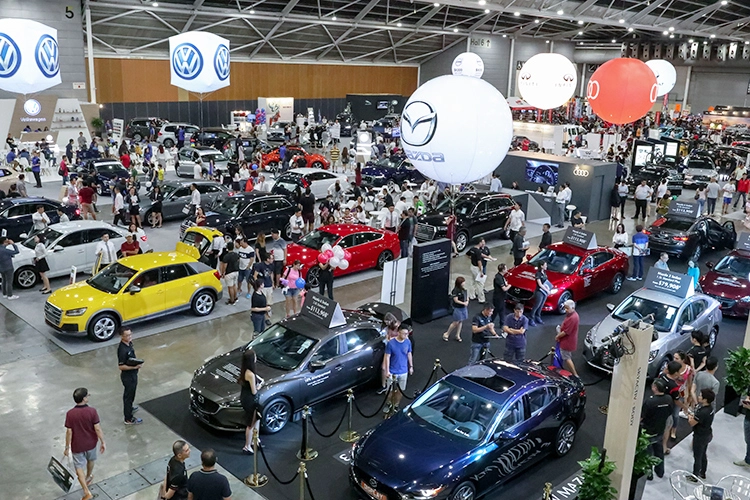Introduction:
In the dynamic world of automobiles, where innovation and design converge, car shows and expos stand as grand showcases of technological prowess, design brilliance, and automotive culture. These events have evolved into much more than mere exhibitions; they are immersive experiences that captivate enthusiasts, industry professionals, and the general public alike. In this exploration, we delve into the importance of car shows and expos, examining their role in shaping the automotive landscape, influencing consumer choices, and fostering a vibrant community of automotive enthusiasts.
1. Showcasing Technological Advancements:
Innovation on Display:
Car shows and expos serve as platforms where automakers unveil their latest technological achievements. From cutting-edge electric vehicles and autonomous driving features to advancements in safety technology and connectivity, these events offer a firsthand look at the future of mobility.
Inspiring Industry Progress:
By showcasing breakthroughs in engineering and design, car shows inspire healthy competition among automakers. The quest to unveil the next groundbreaking vehicle encourages innovation and drives the automotive industry forward, benefitting consumers with improved features and performance.
2. Celebrating Design Excellence:
Design as a Centerpiece:
Car shows emphasize the artistic side of automotive craftsmanship. Sleek lines, aerodynamic profiles, and interior luxury are celebrated, highlighting the importance of design in creating vehicles that are not just modes of transportation but works of art.
Influence on Consumer Preferences:
The aesthetic appeal of cars displayed at shows can significantly impact consumer preferences. Exposure to innovative designs and emerging trends can influence purchasing decisions, steering the automotive market towards styles and features that resonate with the public.
3. Connecting Brands with Consumers:
Direct Engagement:
Car shows provide a unique opportunity for brands to engage directly with their audience. Enthusiasts can interact with representatives, ask questions, and experience the brand in a way that goes beyond traditional dealership interactions. This direct engagement fosters brand loyalty and enhances the overall consumer experience.
Test Drives and Experiences:
Many car shows offer the chance for attendees to test drive vehicles on-site. This hands-on experience allows potential buyers to get a feel for the performance, comfort, and features of various models, aiding them in making informed decisions when considering a purchase.
4. Industry Networking and Collaboration:
B2B Opportunities:
Car shows and expos are not only consumer-centric events but also crucial forums for business-to-business (B2B) interactions. Automakers, suppliers, and industry professionals converge to discuss collaborations, innovations, and emerging trends, fostering a network that propels the automotive industry forward.
Platform for Emerging Technologies:
Emerging technologies, such as electric and autonomous vehicles, often debut at these events. Car shows serve as a launchpad for startups and established companies alike to showcase their groundbreaking technologies, attracting potential investors, partners, and industry collaborators.
5. Preserving Automotive Heritage:
Historical Displays:
Car shows celebrate automotive history by featuring displays of classic and vintage vehicles. These exhibits pay homage to iconic models, showcasing the evolution of automotive design, engineering, and innovation throughout the decades.
Educational Opportunities:
By highlighting the heritage of automobiles, car shows offer educational opportunities for enthusiasts and the general public. Attendees can learn about the historical significance of different models, the evolution of automotive technology, and the cultural impact of certain vehicles.
6. Promoting Environmental Sustainability:
Showcasing Green Innovation:
In response to the growing focus on environmental sustainability, car shows increasingly feature displays of green technology and eco-friendly vehicles. This emphasis on sustainable mobility encourages the automotive industry to prioritize environmental responsibility in product development.
Educating on Eco-Friendly Choices:
Car shows serve as educational platforms, raising awareness about eco-friendly transportation options. Exhibits featuring electric and hybrid vehicles, along with advancements in fuel efficiency, play a crucial role in encouraging consumers to make environmentally conscious choices.
7. Cultural and Social Impact:
Community Building:
Car shows bring together automotive enthusiasts, creating a sense of community. Attendees share a common passion, and these events become hubs for networking, forming friendships, and fostering a shared love for automobiles.
Cultural Phenomena:
Iconic car shows, such as international auto shows or specialty expos, become cultural phenomena. They attract media attention, setting trends, and becoming platforms for cultural conversations about design, technology, and the future of transportation.
8. Media Coverage and Global Reach:
Global Visibility:
Car shows receive extensive media coverage, both traditional and digital, amplifying their impact on a global scale. This visibility not only benefits participating brands but also contributes to the overall influence of these events on automotive trends and consumer perceptions.
Digital Engagement:
With the rise of digital platforms, car shows extend their reach beyond physical attendance. Livestreams, social media coverage, and online content allow a global audience to experience the excitement, innovations, and reveals, democratizing access to the latest in automotive technology.
9. Economic Impact:
Boosting Local Economies:
Hosting car shows generates economic benefits for the host city or region. From increased tourism and hotel bookings to local businesses benefiting from event-related activities, these exhibitions contribute significantly to the economic vitality of the hosting area.
Job Creation and Industry Growth:
The automotive industry’s growth, driven in part by the exposure gained at car shows, leads to job creation. From manufacturing to marketing, the demand for skilled professionals in various sectors of the industry contributes to economic development.
10. Fostering Innovation in Ancillary Industries:
Technological Integration:
Car shows are not limited to automotive manufacturers. Companies specializing in ancillary industries, such as technology, materials, and entertainment, also use these events to showcase their innovations. This cross-industry collaboration fosters a multidisciplinary approach to automotive innovation.
Influence on Product Development:
Ancillary industries often introduce products and services at car shows that influence the automotive sector. From advanced infotainment systems to innovative materials, these contributions have a lasting impact on the development of future vehicles.
Conclusion:
Car shows and expos are more than glittering showcases of automotive glamour; they are dynamic, influential platforms that shape the present and future of the automotive industry. From introducing cutting-edge technologies to fostering a sense of community among enthusiasts, these events play a multifaceted role in influencing consumer choices, propelling innovation, and contributing to the global cultural conversation surrounding automobiles. As the automotive landscape continues to evolve, car shows and expos stand as vibrant celebrations of an industry in constant motion, where the love for automobiles intersects with technological ingenuity, design brilliance, and a shared passion for the open road.







